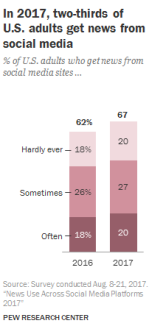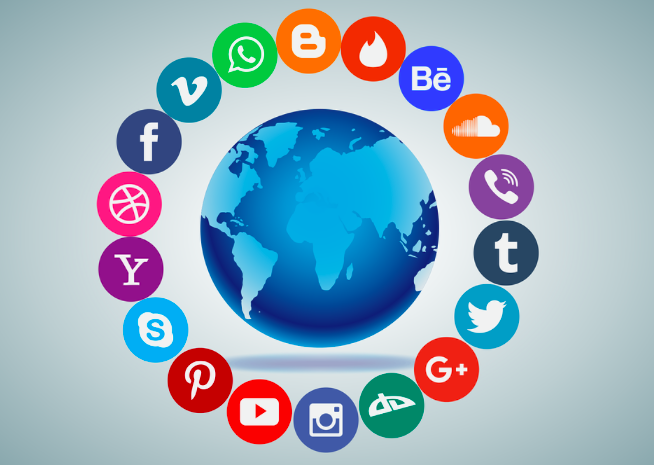The evolution of mobile devices over the course of the past 20 years has come with significant change in how things are done. In the 21st century, social media is a big component to this ever-changing society.
Instead of opening the door and picking up the newspaper to read what is going on in the world, we turn to our cell phones. Even waiting each night for the 5 o’clock news has phased out over time from what it once was. There is no longer a need to wait to find out news. Now it is readily accessible in the palm of our hands.
This is all thanks to the ever changing world of cell phones. From the beginning, cell phones were an easier, faster option to get ahold of someone. To many, cell phones have changed from a luxury to a necessity.
Social media has helped to make many different things easier. Photos can be shared faster, homework can be submitted instantly and most importantly, news can be dispersed within seconds.
A 2017 survey by Pew Research Center found that two-thirds of adults in the United States obtain their news from social media platforms. That is 67 percent of the country relying on their cell phones to find out what is going on around them.

Another intriguing stat from the research was that out of the 67 percent, it wasn’t just mainly young adults. 55 percent of Americans 50 or older reported that they too use social media when it comes to looking for news media.
One year prior to the 2017 survey, only 45 percent said they used social media for consuming news. Although it may not seem like much, the 10 percent rise speaks volumes about the impact social media truly has on each person in the United States.
James Clark, a former reporter for the Atlantic City Press, believes social media has had a remarkable impact on the industry as a whole. Not only has it changed how people consume their news, but it has had an impact on how news itself is distributed.
“It’s such a digital culture that people in their 20s [in the industry] are more likely to have the skills needed to transition away from the print age,” Clark said.
Due to this influx of social media use for news, questions arise over what sources can be trusted. Years ago, news media could only be found on limited platforms such as newspapers and television. Getting news from these sources were reliable and fact checked by professionals in the industry. Today, that is not always the case.
The vast variety of platforms have given organizations and people the place to say whatever they want. With the world beginning to rely on social media, the integrity of some news outlets are in question.
If you don’t know how to properly identify what is real and what fake, getting news from social media is extremely risky.
Clark believes that getting news from social media can be reliable, but it comes with a price that the consumer should be aware of.
“The burden of fact checking is now on the consumer of news,” Clark said.
Take for example the Russian use of social media platforms in the 2016 election. Using fictitious aliases, the Russians posted infographics and pictures to sway opinions in the election. Thousands of Americans looked to these fake pages and posts, believing everything they would post. Little did anyone know, but these were not reputable sources.
The same situation can go for consuming news online. There are plenty of fake Twitter handles posing to be reporters for reputable companies. Although they are fake, people continue to fall for their somewhat realistic presence.
One thing is for sure, social media has helped to revolutionize the news industry by bringing content to viewers in a faster, more efficient way. But it should not replace journalism entirely. There is only so much that a consumer can get from social media compared to a thought out, informative piece of journalism.

“Social media is a tool, but it shouldn’t be the main part of journalism,” Clark said. “There’s no substitute for good, in-depth writing, reporting and photography.”
As social media evolves, the news media world we once knew continues to evolve as well. It may make a lot of things easier, but it also has its disadvantages. As technology continues to advance, the use of social media will only become a more integral role in how the world operates.



